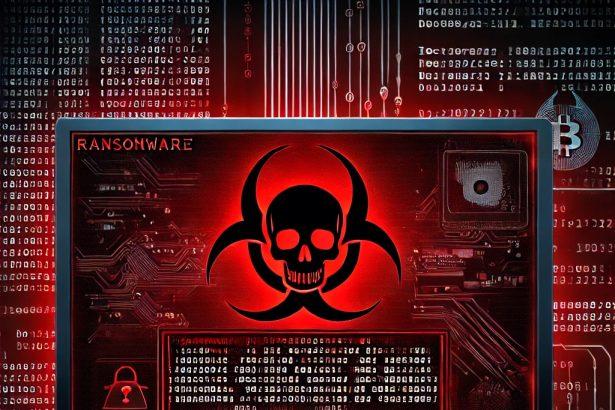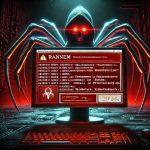RTRUE ransomware is a crypto-extortion malware that encrypts files on infected systems and threatens to publish stolen data unless a ransom is paid. Victims are left with inaccessible files, renamed file extensions, and a threatening ransom note demanding cryptocurrency in exchange for recovery.
Threat Overview
| Field | Details |
|---|---|
| Threat type | Crypto-ransomware (data encryption + extortion) |
| Encrypted file extension | Renamed files – typically include a random ID and the “.locked” or similar suffix |
| Ransom note file name(s) | readme.txt |
| Associated email addresses | None specified |
| Detection names | Avast: Win64:MalwareX-gen [Misc]; Combo Cleaner: Trojan.GenericKD.76935106; ESET-NOD32: Variant Of Win64/Agent_AGen.FBG; Kaspersky: UDS:Trojan-Ransom.Win32.Generic; Microsoft: Ransom:Win32/ContiCrypt.MFP!MTB |
| Symptoms of infection | Files become inaccessible, file names are altered with new extensions, ransom note appears on desktop or in folders |
| Damage & distribution methods | Encrypts most personal and business-critical files, may also install password-stealing trojans. Spread through phishing emails, malicious attachments, fake software installers, torrents, and malvertising |
| Danger level | Severe |
| Removal tool | SpyHunter (Download Link) |
Ransom Note Text
Your data is stolen and encrypted.
If you don’t pay the ransom, the data will be published on our TOR darknet sites. … The sooner you pay the ransom, the sooner your company will be safe.
What guarantee is there that we won’t cheat you?
Nothing is more important than our reputation.
Threat Evaluation & Analysis
How I got infected
RTRUE ransomware can infiltrate systems via deceptive email attachments (such as fake invoices or documents), cracked software installers, malicious torrents, tech support scams, or drive-by downloads from compromised websites. Once executed, it silently begins encrypting files and may run additional malicious payloads to steal login credentials or banking information.
What does it do
RTRUE encrypts a wide range of file types using strong encryption algorithms, changing filenames and rendering them unusable. It places a ransom note demanding Bitcoin payment in exchange for a decryption key. Additionally, it threatens victims with data leakage via darknet leak sites if payment isn’t made. In some cases, RTRUE installs secondary malware like information stealers, deepening the security breach.
Should you be worried for your system
Yes. RTRUE is considered a high-risk ransomware due to its dual impact: encrypting important data and extorting victims with data leak threats. Once infected, users lose access to documents, databases, and other sensitive files. Even after removal, encrypted files may remain unusable unless backups exist or a decryptor becomes available. Paying the ransom offers no guarantee of recovery and supports cybercriminal operations.
Manual Ransomware Removal Guide
Warning: Manual removal is complex and risky. If not done correctly, it can lead to data loss or incomplete removal of ransomware. Only follow this method if you are an advanced user. If unsure, proceed with Method 2 (SpyHunter Removal Guide).
Step 1: Disconnect from the Internet
- Unplug your Ethernet cable or disconnect Wi-Fi immediately to prevent further communication with the ransomware’s command and control (C2) servers.
Step 2: Boot into Safe Mode
For Windows Users:
- For Windows 10, 11:
- Press Windows + R, type
msconfig, and hit Enter. - Go to the Boot tab.
- Check Safe boot and select Network.
- Click Apply and OK, then restart your PC.
- Press Windows + R, type
- For Windows 7, 8:
- Restart your PC and press F8 repeatedly before Windows loads.
- Select Safe Mode with Networking and press Enter.
For Mac Users:
- Restart your Mac and immediately press and hold the Shift key.
- Release the key once you see the Apple logo.
- Your Mac will start in Safe Mode.
Step 3: Locate and Terminate Malicious Processes
For Windows Users:
- Press Ctrl + Shift + Esc to open Task Manager.
- Look for suspicious processes (e.g., unknown names, high CPU usage, or random letters).
- Right-click on the process and select End Task.
For Mac Users:
- Open Activity Monitor (Finder > Applications > Utilities > Activity Monitor).
- Look for unusual processes.
- Select the process and click Force Quit.
Step 4: Delete Malicious Files
For Windows Users:
- Press Windows + R, type
%temp%, and hit Enter. - Delete all files in the Temp folder.
- Navigate to:
C:\Users\[Your Username]\AppData\RoamingC:\Users\[Your Username]\AppData\LocalC:\Windows\System32
- Look for suspicious files related to the ransomware (random file names, recently modified) and delete them.
For Mac Users:
- Open Finder and go to Go > Go to Folder.
- Type
~/Library/Application Supportand delete suspicious folders. - Navigate to
~/Library/LaunchAgentsand remove unknown.plistfiles.
Step 5: Remove Ransomware from Registry or System Settings
For Windows Users:
Warning: Incorrect changes in the Registry Editor can damage your system. Proceed with caution.
- Press Windows + R, type
regedit, and hit Enter. - Navigate to:
HKEY_CURRENT_USER\SoftwareHKEY_LOCAL_MACHINE\Software
- Look for unfamiliar folders with random characters or ransomware-related names.
- Right-click and select Delete.
For Mac Users:
- Go to System Preferences > Users & Groups.
- Click on Login Items and remove any suspicious startup items.
- Navigate to
~/Library/Preferencesand remove malicious.plistfiles.
Step 6: Restore System Using System Restore (Windows) or Time Machine (Mac)
For Windows Users:
- Press Windows + R, type
rstrui, and hit Enter. - Click Next, choose a restore point before the infection, and follow the prompts to restore your system.
For Mac Users:
- Restart your Mac and hold Command + R to enter macOS Utilities.
- Select Restore from Time Machine Backup.
- Choose a backup prior to the ransomware infection and restore your system.
Step 7: Use a Decryption Tool (If Available)
- Visit No More Ransom (www.nomoreransom.org) and check if a decryption tool is available for your ransomware variant.
Step 8: Recover Files Using Backup
- If you have backups on an external drive or cloud storage, restore your files.
Automatic Ransomware Removal Using SpyHunter
If manual removal seems too risky or complicated, using a reliable anti-malware tool like SpyHunter is the best alternative.
Step 1: Download SpyHunter
Download SpyHunter from the official link: Download SpyHunter
Or follow the official installation instructions here:
SpyHunter Download Instructions
Step 2: Install SpyHunter
- Open the downloaded file (
SpyHunter-Installer.exe). - Follow the on-screen prompts to install the program.
- Once installed, launch SpyHunter.
Step 3: Perform a Full System Scan
- Click on Start Scan Now.
- SpyHunter will scan for ransomware and other malware.
- Wait for the scan to complete.
Step 4: Remove Detected Threats
- After the scan, SpyHunter will list all detected threats.
- Click Fix Threats to remove the ransomware.
Step 5: Use SpyHunter’s Malware HelpDesk (If Needed)
If you are dealing with a stubborn ransomware variant, SpyHunter’s Malware HelpDesk provides custom fixes to remove advanced threats.
Step 6: Restore Your Files
If your files are encrypted:
- Try No More Ransom (www.nomoreransom.org) for decryption tools.
- Restore from cloud storage or external backups.
Preventing Future Ransomware Attacks
- Keep backups on an external hard drive or cloud storage.
- Use SpyHunter to detect threats before they infect your system.
- Enable Windows Defender or a trusted antivirus program.
- Avoid suspicious emails, attachments, and links.
- Update Windows, macOS & software regularly.
Conclusion
RTRUE ransomware is a dangerous and highly disruptive malware that encrypts files and holds victims hostage with the threat of data exposure. It compromises both file access and personal privacy. Removing the malware should be your top priority, and tools like SpyHunter can assist with detection and elimination. However, preventing infection remains the best strategy—avoid suspicious emails, downloads, and websites to keep your system safe from this and similar ransomware threats.




